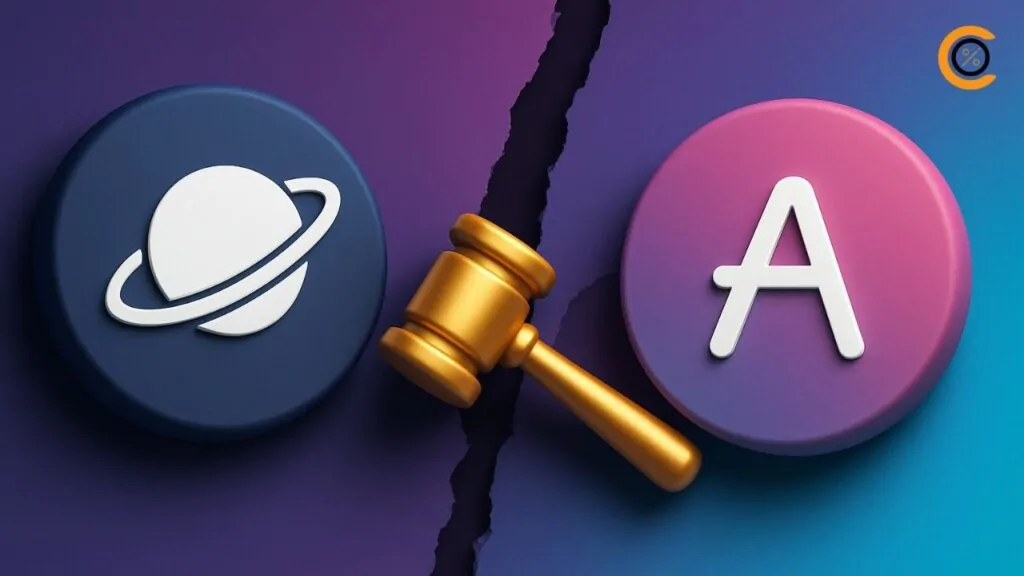- •El Grupo de Trabajo sobre Activos Criptográficos de la SEC está revisando el Marco de Infraestructura Financiera Post-Cuántica (PQFIF) para proteger los activos digitales.
- •La computación cuántica podría amenazar Bitcoin, Ethereum y otras criptomonedas a partir de 2028, lo que genera preocupaciones sobre riesgos sistémicos.
- •El PQFIF propone una migración gradual hacia estándares a prueba de tecnología cuántica, centrándose primero en las billeteras y los intercambios institucionales.
- •Bitcoin y los desarrolladores de Ethereum ya están probando soluciones criptográficas resistentes a la tecnología cuántica.
- •Los reguladores globales y las empresas privadas están lanzando iniciativas paralelas, lo que pone de relieve la urgencia de una preparación temprana.
El Grupo de Trabajo sobre Criptoactivos de la Comisión de Bolsa y Valores de EE. UU. (SEC) está revisando un marco que insta a los reguladores a proteger los activos digitales contra los riesgos emergentes de la computación cuántica. El llamado a adoptar estándares a prueba de la computación cuántica pone de relieve la preocupación de que... BitcoinEthereum y otras criptomonedas podrían enfrentar importantes desafíos de seguridad en el futuro cercano.
Una propuesta para la protección post-cuántica
El marco, denominado Marco de Infraestructura Financiera Post-Cuántica (PQFIF), fue creado por Daniel Bruno Corvelo Costa y presentado a la SEC en septiembre de 2025. Presenta una hoja de ruta para la transición gradual de los activos digitales desde sus protecciones criptográficas actuales a métodos post-cuánticos.
La propuesta señala que las firmas criptográficas existentes, que protegen billeteras, plataformas de intercambio y sistemas de pago, no se diseñaron considerando las amenazas cuánticas. A medida que la computación cuántica avanza, estas protecciones podrían vulnerarse, poniendo en riesgo billones de dólares en activos.
La preocupación de “cosechar ahora, descifrar después”
Una cuestión central planteada en el PQFIF es la llamada "Cosecha ahora, descifra después" Estrategia. Es posible que los adversarios ya estén recopilando datos financieros cifrados, aunque actualmente no puedan descifrarlos. Una vez que las computadoras cuánticas con relevancia criptográfica (CRQC) alcancen la potencia suficiente, esta información almacenada podría desbloquearse de inmediato.
Los analistas advierten que tal avance, comúnmente conocido como el "Día Q", podría llegar ya en 2028, aunque algunas estimaciones extienden el plazo hasta la década de 2030. La imprevisibilidad de este plazo hace esencial la preparación temprana.
Recomendaciones clave del marco
El PQFIF establece una estrategia por fases para abordar estos riesgos:
- Escaneo automatizado: Controles periódicos para identificar sistemas criptográficos obsoletos en billeteras, intercambios y plataformas de custodia.
- Priorización: La migración debe comenzar con sistemas de alto valor y alto riesgo, como billeteras institucionales y soluciones de custodia, antes de extenderse a otras plataformas.
- Sistemas duales: Uso de criptografía clásica y resistente a la cuántica durante la transición para evitar interrupciones.
- Supervisión regulatoria: Plazos de cumplimiento claros, auditorías y requisitos de informes para garantizar una adopción oportuna.
Estas recomendaciones están alineadas con los estándares finalizados por el Instituto Nacional de Estándares y Tecnología (NIST) en 2024 y 2025, como FIPS 203-205 y HQC, lo que garantiza que el cambio se base en métodos reconocidos y confiables.
Bitcoin y respuestas de los desarrolladores de Ethereum
La propia industria ha comenzado a explorar soluciones de seguridad cuántica. En julio de 2025, Bitcoin Los desarrolladores propusieron la "Migración Post Cuántica y la Finalización de Firmas Legadas", un plan gradual para retirar los sistemas de firmas antiguos, vulnerables a ataques cuánticos. La propuesta sugiere bloquear primero las transacciones a direcciones inseguras y, años después, congelar permanentemente los fondos en dichas direcciones.
Ethereum también se está preparando mediante programas piloto. Los desarrolladores están probando algoritmos basados en lattice y hash resistentes al descifrado cuántico, con planes para realizar pruebas en la red principal para 2026. Estos pasos subrayan la urgencia de prepararse tanto a nivel regulatorio como técnico.
Iniciativas globales y del sector privado
La revisión del PQFIF por parte de la SEC es parte de un esfuerzo internacional más amplio hacia la preparación post-cuántica. Unión Europea Ha ordenado a los Estados miembros que inicien la migración en 2026, con protección plena exigida para 2030. Países como Francia, Alemania y los Países Bajos ya tienen estrategias nacionales en marcha.
Mientras tanto, las empresas privadas están invirtiendo fuertemente. Empresas como BTQ Technologies y SEALSQ han lanzado pilotos de custodia cuántica segura y firmas digitales, mientras que El Salvador ha distribuido sus... Bitcoin tenencias en múltiples billeteras para reducir la exposición a una posible falla de un solo punto.
Estas medidas ponen de relieve cómo tanto los reguladores como la sector privado están tratando el riesgo cuántico no como una posibilidad lejana, sino como un asunto urgente que requiere una planificación inmediata.
Por qué esto es importante para la seguridad de los activos digitales
La criptografía que protege los activos digitales actuales podría verse comprometida algún día por los avances en la computación cuántica. Sin una transición proactiva, los mercados se enfrentan al riesgo de fallos sistémicos, pérdidas catastróficas para los inversores y una pérdida de confianza.
Al revisar el PQFIF y alentar la adopción por parte de la industria de estándares a prueba de cuánticos, Grupo de trabajo sobre criptoactivos de la SEC Se insta a actuar antes de que las capacidades cuánticas se pongan al día. El marco enfatiza la acción temprana y gradual para asegurar Bitcoin, Ethereum y la economía digital más amplia.
Pensamientos Finales
La consideración por parte de la SEC de un plan a prueba de tecnología cuántica marca un paso significativo en el reconocimiento de la magnitud de la amenaza. Los activos digitales como Bitcoin y Ethereum siguen siendo seguros hoy en día, pero los expertos enfatizan que el margen para construir defensas es limitado. Garantizar una migración coordinada a estándares poscuánticos será esencial para proteger a los inversores y preservar la confianza en los activos digitales.
- SEC – Marco de Infraestructura Financiera Post-Cuántica (PQFIF) (3 de septiembre de 2025)
- Cointelegraph – Se insta al grupo de trabajo sobre criptomonedas de la SEC a proteger los activos digitales de forma cuántica (4 de septiembre de 2025)
- Mitrade – Las partes interesadas instan a la SEC estadounidense a proteger las criptomonedas con métodos a prueba de cuántica (4 de septiembre de 2025)
- Coinfomania – La SEC analiza el plan de prueba cuántica para Bitcoin Y Ethereum (4 de septiembre de 2025)







